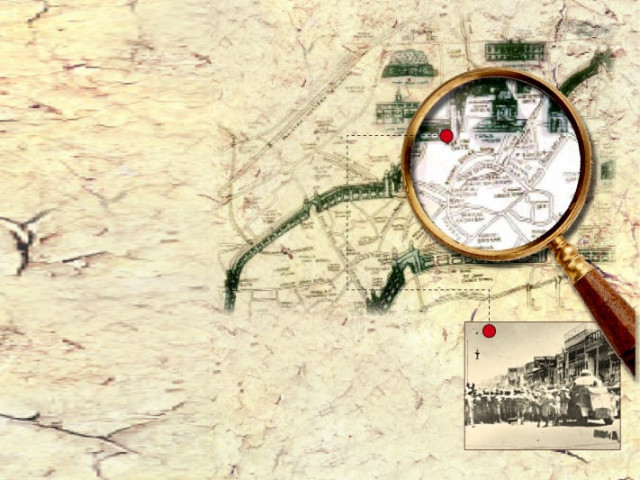
The twin memorials at Qissa Khwani Bazaar remind us of the sacrifices rendered by the people of Peshawar in their struggle against the British Raj. On April 23, 1930, the British forces gunned down 400 innocent civilians in cold blood who were protesting against the arrest of their leader being escorted to the Kabuli police station.
The recent renovation of these memorials by Senior Minister Bashir Bilour and painting both memorial domes red to signify the Awami National Party’s (ANP) colours, has renewed a historic controversy. Bilour approved Rs450,000 to give it an ANP theme to convince people that hundreds of their party workers gave their lives.
Bilour’s public relations officer, Noor Lala, said the renovation of the martyrs’ memorials was necessary due to its poor maintenance. “The white marble caught dust so we added red colour to the domes,” he said, adding that he is unaware of the exact amount being spent on the renovation. This was the first major remodelling of the memorials by the ANP government, he added.
Politicising massacre
The massacre and the memorial surrounding it has been politicised over the years and different political parties have attempted to own the incident to gain mileage.
A few months after the incident, a memorial was constructed and painted white to honour those who lost their lives. However, the memorial, which was becoming a symbol of resistance, was demolished by the British.
“The man who first built a memorial at the site was Aashiq Bakal, a tobacco seller, and the public donated money for this purpose,” general secretary of the Gandhara Hindko Board, Mohammad Ziauddin, told The Express Tribune. The British government arrested Bakal and forced him to demolish the memorial with his own hands as a punishment, he added.
When Khan Abdul Jabbar Khan, more popularly known as Dr Khan Sahib, came into power and became chief minister, he ordered that the memorial be reconstructed. It was Khan who first politicised the memorial by painting it red, associated with his party. The Pakistan Muslim League (PML) also followed suit.
While political parties have tried hijacking the incident’s symbolism, the inhabitants of the city have long forgotten about the lives lost that day.
The construction of the second memorial was funded by Khan Abdul Qayum Khan, who had joined the PML after deserting his allies. Qayum had the memorial painted green, the colour of his party.
Over the decades that followed, subsequent city governments funded the memorials by installing white marble tiles, replacing the party colours. “In the 1980 the city government renovated both the memorials and white marble was added to it to put an effective end to the dispute,” Ziauddin said.
Such changes were acceptable to the city’s residents, especially to the workers of the Red Shirt Movements (A nationalist movement led by Khan Abdul Ghaffar Khan—also known as Bacha Khan), who claimed that it was their procession that was targeted on that April day.
Urdu and English newspapers also published articles, in which different parties have paid tribute to their ‘fallen party workers on that bloody day while fighting to free their country’. The internet is also full of articles with conflicting claims.
Ziauddin, who is writing a book on the Qissa Khwani massacre, said that neither the PML nor the Red Shirt Movement have anything to do with the incident.
Explaining the events leading up to the killings, Ziauddin said that the British government had introduced the SARDA Act, a piece of legislation regarding personal laws in the sub-continent.
“The government wanted to change the Muslim, Sikh and Hindu personal laws and these three communities were greatly enraged and protested against it,” he said, adding that these protests coincided with events at the time, including the Hijrat Movement. “The people of Peshawar under the leadership of Mufti Abdur Rahim Popalzai, the leader of Khilafat Movement in the district, would frequently protest against the government. The Qissa Khwani protest and the resulting massacre was the peak of this movement,” he went on saying.
In Bacha Khan’s words
In his autobiography ‘My Life and Struggle,’ Bacha Khan writes that while he was in jail after being arrested near the Nahaqi village on his way to Peshawar on April 23, 1930, ‘my friends informed me that Allah Baksh Barki, the general secretary of Congress party, was arrested on the same day from his office in Peshawar.’
The police wanted to shift Barki to a police station, but a large number of people gathered to protest and the police were forced to take him to the Kabuli police station on foot. Barki was accompanied by thousands of people.
Once they reached the police station, Barki’s supporters were asked to disperse but they defied the order. The native Indian troops were ordered to shoot at the mob but they refused and were replaced by British troops who opened fire at the protestors, killings scores on the spot, Bacha wrote.
In his own words, Bacha said that his Red Shirt or Khudai Khidmatgar were not the target as his party workers now claim.
Published in The Express Tribune, November 28th, 2012.


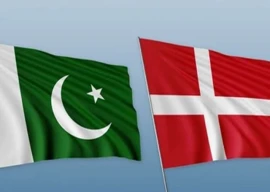


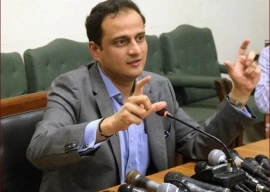
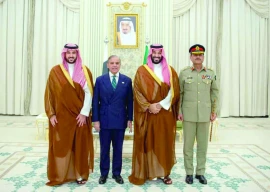

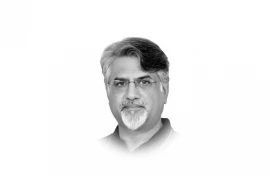
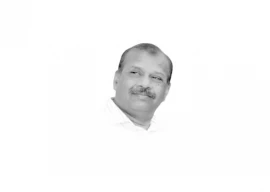


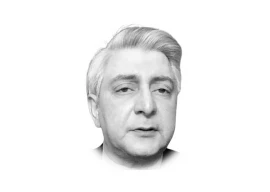

COMMENTS
Comments are moderated and generally will be posted if they are on-topic and not abusive.
For more information, please see our Comments FAQ